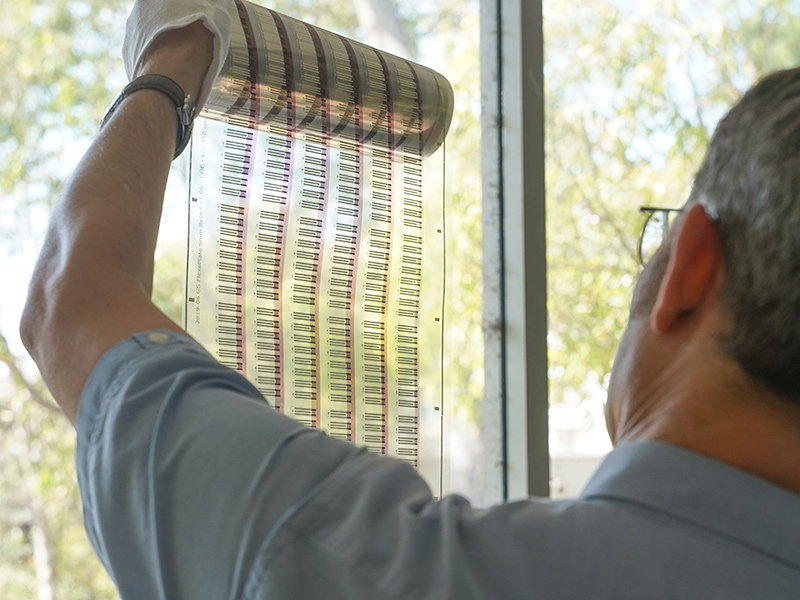 A saliva glucose biosensor test for diabetes developed at the University of Newcastle will soon be in production following $6.3 million in funding to establish the world’s first manufacturing facility for the device.
A saliva glucose biosensor test for diabetes developed at the University of Newcastle will soon be in production following $6.3 million in funding to establish the world’s first manufacturing facility for the device.
Physicist and research leader Professor Paul Dastoor said the team at the university’s Centre for Organic Electronics (COE) are working with commercial partner GBS to set up printing rolls of the novel ‘thin film transistor’ device in the Hunter region of NSW.
“Construction will begin on the facility this year, with the first devices due to roll off the production line by 2023,” Professor Dastoor said.
Professor Dastoor said the device was based on a novel sensor coated with a natural enzyme – glucose oxidase – which interacts with saliva, producing a reaction that generates an electrical current. This current can be measured used to detect substances – including glucose – in minute concentrations.
According to its developers, the small, printable Saliva Glucose Biosensor has been shown to exhibit a linear glucose response at concentrations 100 times more sensitive than commercial blood glucose sensors.
“With this highly sensitive platform, we can now detect glucose at the levels found in saliva, for the first time,” Professor Dastoor said.
“One of our key challenges was the sheer unavailability of glucose in saliva. It exists in minute concentrations, so you need to develop an incredibly powerful platform to detect it. Saliva also contains a plethora of other substances, so you’ve then got to tune out a lot of ‘noise’ to ensure results are accurate.”
It is hoped the saliva test will make painful finger-prick testing for type 1 and type 2 diabetes obsolete, by being able to detect saliva glucose concentrations 100 times lower than in blood, he added.
The sensor could also be developed for application across 130 indications including tumour markers, hormones and allergens, said Professor Dastoor.
The Newcastle University team have already developed a small-scale ‘factory on campus’ at the Institute for Energy and Resources (NIER), including ink synthesis, custom printing and equipment fabrication.
Supported by the Australian National Fabrication Facilities (ANFF) Materials Node, the facility at the cutting edge of an emerging industry known as ‘functional printing’, where instead of producing text and images, printers are producing printed electronic or ‘functional’ devices.
“What we’ve been able to do for the first time is combine printed electronics with biological sensing. That means we’re able to detect molecules like glucose, using sensors we can print hundreds of millions of, using really low-cost printing equipment,” Professor Dastoor said.
“Disruption in the traditional print industry has left a great deal of useful equipment stranded. Functional printing of electronic devices such as the saliva glucose biosensor is an opportunity to recommission this idle equipment, resuscitating onshore manufacturing industries and creating jobs for skilled workers,” he said.